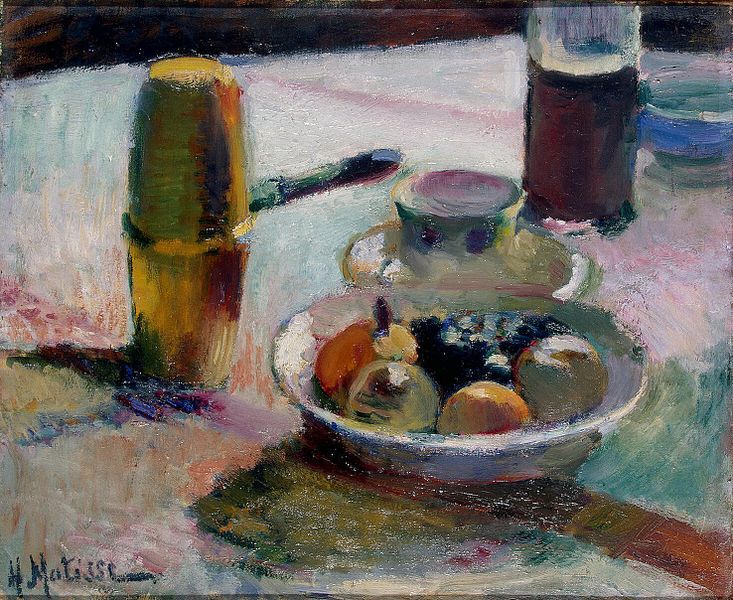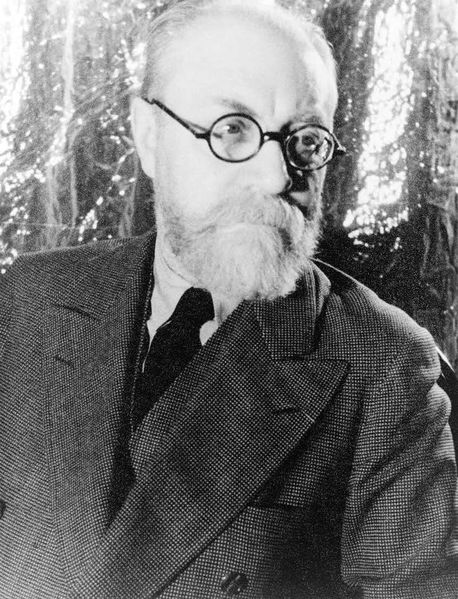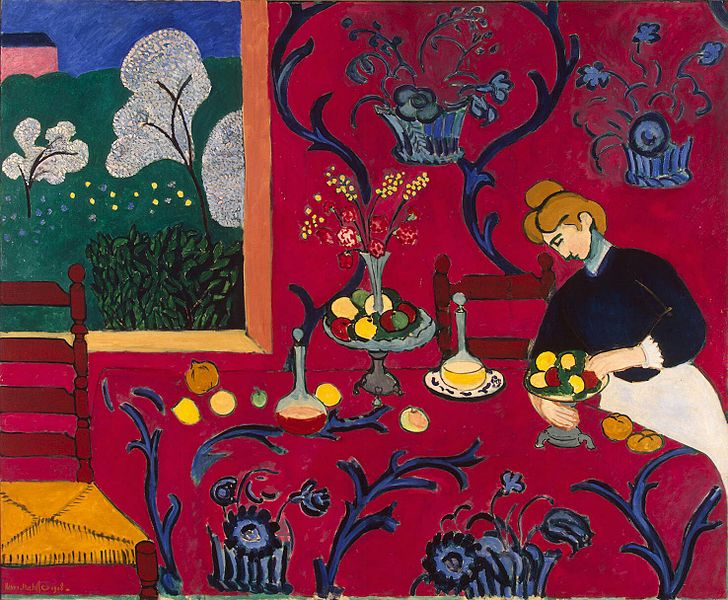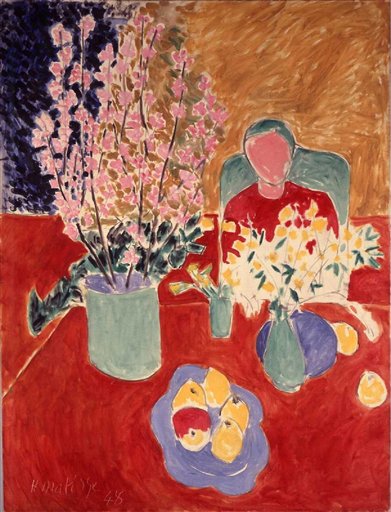| Famous Paintings by Henri Matisse | |
| L’Atelier Rouge, 1911 | |
| The Conversation, 1912 | |
| Woman Reading, 1894 | |
| The Dance, 1909 | |
| The Snail, 1953 | |
| Green Stripe, 1905 | |
| Beasts of the Sea, 1950 | |
| The Open Window, 1905 | |
| Woman with a Hat, 1905 |
Henri Matisse is one of the most well known artists of our day. His contributions to modern art are huge, with colorful and stylistic tendencies that were considered obnoxious when first viewed. He is one of the Fauves, meaning wild beasts in French. The Fauves believed in freedom of expression in art, and that there shouldn’t be any restrictions to what one could paint. Matisse was a sculptor, draughtsman, printmaker, and painter who pushed the boundaries of art further than they had been before.
Matisse was born on December 31, 1869, in Le Cateau-Cambrésis, Nord-du-Pas, France. His parents owned a seed business, and they were middle class. Being the first son, he had high expectations to live up to. In 1887, he went to Paris to study law, and worked as a court administrator after his qualification. He did this for a few years, neither happy nor depressed with the way things were going.
Around 1891, Matisse had appendicitis, and was in bed for some time. He learned to paint with all his extra free time, and gave up his position at the court to study painting. His father was extremely disappointed in his son’s choice. That same year, he went to study at the Académie Julian. Henri became an apprentice to William-Adolphe Bouger and Gustave Moreau.
 His first works were still life’s and landscapes in Flemish style. Matisse had his first show in the Salon de la Société des Beaux Arts. The state bought two of his paintings. Around 1894, he had a daughter named Marguerite with French model Caroline Jorblau. Marguerite later served as a model in many of his paintings. Four years later, he married Amélia Noellie Paraye, and had two sons, Jean (1899) and Pierre (1900).
His first works were still life’s and landscapes in Flemish style. Matisse had his first show in the Salon de la Société des Beaux Arts. The state bought two of his paintings. Around 1894, he had a daughter named Marguerite with French model Caroline Jorblau. Marguerite later served as a model in many of his paintings. Four years later, he married Amélia Noellie Paraye, and had two sons, Jean (1899) and Pierre (1900).
From 1897-1898, Matisse visited the painter John Peter Russel, who introduced him to Impressionism and the work of Van Gogh. He thought Russel to be a better teacher compared to the ones he had while attending the Académie Julian. “Russel was my teacher, and he explained the color theory to me.”
Afterwards, Henri became obsessed with art, and started buying many works from his favorite artists. His buying started exceeding his income, and he was soon in debt. From 1899-1905, he experimented with pointillism, a style developed by George Seurat. In 1904, he had his first solo exhibition at Vollard’s gallery, which was a failure. The year after, he joined the Fauves.

Matisse participated in a show they held in 1905, and all the critics hated it. One even said, “A pot of paint has been thrown into the face of the public.” But, through all the negative publicity, Picasso patron Gertrude Stein and her brother loved all the artwork. She bought Matisse’s Woman with a Hat, which was one of the most controversial paintings at the show. Woman with a Hat reflected what Matisse’s future pieces would look like; lots of color, with a powerful subject, and a niche for being hated.
Two people headed the Fauvists; André Derain and Henri Matisse. To earn money for the group, Henri opened Académie Matisse, and instructed young people. This lasted from 1907-1911, and then Matisse moved onto other things. In 1910, Henri finally got a patron. His name was Sergei Shchukin, and he was a Russian art collector. He commissioned the painting, La Danse in 1910, one of Matisse’s most famous art works.
In 1913, Matisse’s painting Nu Bleu, was burned at the Armoury Show in protest, along with several other works by other artists.
Henri moved to Cimiez, located on the French Rivera in 1917. He was tired of the war (World War I), and wished to relax. His paintings during this period often portrayed people just resting, and they had an oriental touch to them, since there was an increase in trade with Asia. For instance, The Painter and His Model, painted in 1917. The work is characterized with loose brush strokes, and dark lines outlining the main points in the composition.
In 1930, he got a new patron, Albert C. Barnes. He commissioned La Danse II, which was a public mural, rather than a painting. He separated from his wife after 41 years of marriage in 1939.
Two years later, he underwent Colostomy Surgery, and was permanently in a wheel chair after that. A Russian woman, Lydia Delekatorskaya cared for him until his death.
He published Jazz in 1947, a book with prints of colorful paper collages, which was the art of choice, now that he was older. Since World War II had just ended, he got in contact with his daughter Marguerite after not speaking to her for some time. He found out that she had been put into Ravensbrück Concentration camp for part of the war. He was angry, for he had never been a political figure, and couldn’t understand why she was imprisoned.
His last project was finished in 1951, which took four years. Matisse decorated the inside of the Chapelle du Rosaire de Vence. Three years later, he died of a heart attack at the age of 84, on November 3. His body is interred at the Cemetery of Monastère Notre Dame de Cimiez.


